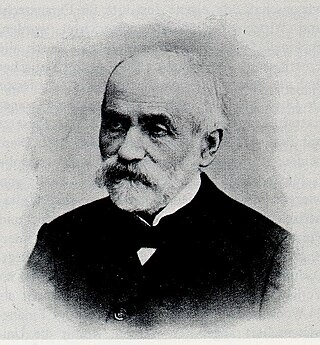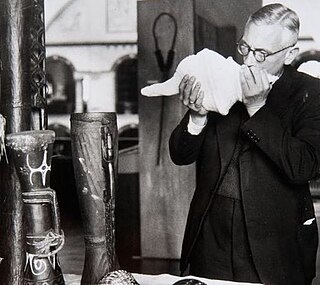Related Research Articles

Ethnocentrism in social science and anthropology—as well as in colloquial English discourse—means to apply one's own culture or ethnicity as a frame of reference to judge other cultures, practices, behaviors, beliefs, and people, instead of using the standards of the particular culture involved. Since this judgment is often negative, some people also use the term to refer to the belief that one's culture is superior to, or more correct or normal than, all others—especially regarding the distinctions that define each ethnicity's cultural identity, such as language, behavior, customs, and religion. In common usage, it can also simply mean any culturally biased judgment. For example, ethnocentrism can be seen in the common portrayals of the Global South and the Global North.
Ethnology is an academic field and discipline that compares and analyzes the characteristics of different peoples and the relationships between them.

The term multiculturalism has a range of meanings within the contexts of sociology, political philosophy, and colloquial use. In sociology and in everyday usage, it is a synonym for ethnic pluralism, with the two terms often used interchangeably, and for cultural pluralism in which various ethnic and cultural groups exist in a single society. It can describe a mixed ethnic community area where multiple cultural traditions exist or a single country within which they do. Groups associated with an indigenous, aboriginal or autochthonous ethnic group and settler-descended ethnic groups are often the focus.

Ethnomusicology is the multidisciplinary study of music in its cultural context, investigating social, cognitive, biological, comparative, and other dimensions involved other than sound. Ethnomusicologists study music as a reflection of culture and investigate the act of musicking through various immersive, observational, and analytical approaches drawn from other disciplines such as anthropology to understand a culture’s music. This discipline emerged from comparative musicology, initially focusing on non-Western music, but later expanded to embrace the study of any and all different kinds of music of the world.
An ethnicity or ethnic group is a group of people who identify with each other on the basis of perceived shared attributes that distinguish them from other groups. Those attributes can include a common nation of origin, or common sets of ancestry, traditions, language, history, society, religion, or social treatment. The term ethnicity is often used interchangeably with the term nation, particularly in cases of ethnic nationalism.
Transculturation is a term coined by Cuban anthropologist Fernando Ortiz in 1940 to describe the phenomenon of merging and converging cultures. Transculturation encompasses more than transition from one culture to another; it does not consist merely of acquiring another culture (acculturation) or of losing or uprooting a previous culture (deculturation). Rather, it merges these concepts and instead carries the idea of the consequent creation of new cultural phenomena (neoculturation) in which the blending of cultures is understood as producing something entirely new.
Monoculturalism is the policy or process of supporting, advocating, or allowing the expression of the culture of a single social or ethnic group. It generally stems from beliefs within the dominant group that their cultural practices are superior to those of minority groups and is often related to the concept of ethnocentrism, which involves judging another culture based on the values and standards of one's own culture, though this is usually untrue if cultural nationalism is dominant, as opposed to ethno-nationalism. It may also involve the process of assimilation whereby other ethnic groups are expected to adopt the culture and practices of the dominant ethnic group. Monoculturalism, in the context of cultural diversity, is the opposite of multiculturalism.

Intercultural learning is an area of research, study and application of knowledge about different cultures, their differences and similarities. On the one hand, it includes a theoretical and academic approach. On the other hand, it comprises practical applications such as learning to negotiate with people from different cultures, living with people from different cultures, living in a different culture and the prospect of peace between different cultures.
Cultural competence, also known as intercultural competence, is a range of cognitive, affective, behavioural, and linguistic skills that lead to effective and appropriate communication with people of other cultures. Intercultural or cross-cultural education are terms used for the training to achieve cultural competence.

Youth exclusion is a form of social exclusion in which youth are at a social disadvantage in joining institutions and organizations in their societies. Troubled economies, lack of governmental programs, and barriers to education are examples of dysfunctions within social institutions that contribute to youth exclusion by making it more difficult for youth to transition into adulthood. European governments have recently recognized these shortcomings in societies organizational structures and have begun to re-examine policies regarding social exclusion. Many policies dealing with social exclusion are targeted at youth since this demographic of people face a transition into adulthood; defining career and lifestyle choices that will affect the future culture and structure of a society.
A culture gap is any systematic difference between two cultures which hinders mutual understanding or relations. Such differences include the values, behavior, education, and customs of the respective cultures. As international communications, travel, and trade have expanded, some of the communication and cultural divisions have lessened. Books on how to handle and be aware of cultural differences seek to prepare business people and travelers. Immigrants and migrant laborers need to learn the ways of a new culture. Tourists can also be confronted with variants in protocols for tipping, body language, personal space, dress codes, and other cultural issues. Language instructors try to teach cultural differences as well.

Cultural sensitivity, also referred to as cross-cultural sensitivity or cultural awareness, is the knowledge, awareness, and acceptance of other cultures and others' cultural identities. It is related to cultural competence, and is sometimes regarded as the precursor to the achievement of cultural competence, but is a more commonly used term. On the individual level, cultural sensitivity is a state of mind regarding interactions with those different from oneself. Cultural sensitivity enables travelers, workers, and others to successfully navigate interactions with a culture other than their own.
Moral exclusion is a psychological process where members of a group view their own group and its norms as superior to others, belittling, marginalizing, excluding, even dehumanizing targeted groups. A distinction should be drawn between active exclusion and omission. The former requires intent and is a form of injustice, known as moral exclusion; while the latter is thoughtlessness. The targeted group is viewed as undeserving of morally mandated rights and protections. When conflict between groups escalates, the in-group/out-group bias between the groups heightens. Severe violence between groups can be either the antecedent or the outcome of moral exclusion. At its extreme it is a bidirectional phenomenon that defies precise origin.
Indigenous feminism is an intersectional theory and practice of feminism that focuses on decolonization, Indigenous sovereignty, and human rights for Indigenous women and their families. The focus is to empower Indigenous women in the context of Indigenous cultural values and priorities, rather than mainstream, white, patriarchal ones. In this cultural perspective, it can be compared to womanism in the African-American communities.

The immigrant paradox in the United States is an observation that recent immigrants often outperform more established immigrants and non-immigrants on a number of health-, education-, and conduct- or crime-related outcomes, despite the numerous barriers they face to successful social integration.

Feminist rhetoric emphasizes the narratives of all demographics, including women and other marginalized groups, into the consideration or practice of rhetoric. Feminist rhetoric does not focus exclusively on the rhetoric of women or feminists, but instead prioritizes the feminist principles of inclusivity, community, and equality over the classic, patriarchal model of persuasion that ultimately separates people from their own experience. Seen as the act of producing or the study of feminist discourses, feminist rhetoric emphasizes and supports the lived experiences and histories of all human beings in all manner of experiences. It also redefines traditional delivery sites to include non-traditional locations such as demonstrations, letter writing, and digital processes, and alternative practices such as rhetorical listening and productive silence. According to author and rhetorical feminist Cheryl Glenn in her book Rhetorical Feminism and This Thing Called Hope (2018), "rhetorical feminism is a set of tactics that multiplies rhetorical opportunities in terms of who counts as a rhetor, who can inhabit an audience, and what those audiences can do." Rhetorical feminism is a strategy that counters traditional forms of rhetoric, favoring dialogue over monologue and seeking to redefine the way audiences view rhetorical appeals.

Domestic violence is a prevalent issue dating back to the early 1900s on the Navajo Nation. Domestic violence is defined not only as violence but also any form of abuse in a domestic setting. Incidence on the Navajo Reservation though possibly under-reported is on a steady incline. There are many sociological tendencies of Navajo Reservation Natives surrounding domestic violence on the reservation. Domestic violence is correlated to substance abuse, social network, childhood abuse, governmental assimilation efforts and risk factors in adults. Influence on sociological tendency comes from both internal and external forces. Internally the viscosity of Navajo culture largely influences the behavioral patterns involving domestic violence.
Jennie R. Joe is an American academic, medical anthropologist, and fellow of the Society for Applied Anthropology. Initially trained as a nurse, she was one of the health clinic workers during Occupation of Alcatraz in 1969. She is a professor in the Departments of Family and Community Medicine and American Indian Studies at the University of Arizona. Joe was one of the inaugural board members for the Smithsonian's National Museum of the American Indian and serves on the board of the Urban Indian Health Commission.

Marcelo Suárez-Orozco is the ninth permanent and current chancellor of the University of Massachusetts Boston, and is the first Latino to lead a campus in the Massachusetts public university system. He is the former inaugural UCLA Wasserman Dean at UCLA Graduate School of Education and Information Studies.
Carola Suárez-Orozco is a cultural developmental psychologist, academic, and author. She is a Professor in Residence at the Harvard Graduate School of Education, and the Director of the Immigration Initiative at Harvard. She is also the co-founder of Re-Imagining Migration, a nonprofit organization.
References
- 1 2 Macdonald, Winifred Lilian (April 1998). English speaking migrant children in educational and cultural transition (PDF) (PhD thesis). Curtin University of Technology. hdl: 20.500.11937/1322 .
- ↑ Black, Susan. American School Board Journal; Jan 2006, Vol. 193 Issue 1, p34-36, 3p
- ↑ Carola and Marcelo Suárez-Orozco, "Children of Immigration", Harvard University Press, 2001
- ↑ Gould, Larry A. (April 2002). "Indigenous people policing indigenous people: the potential psychological and cultural costs". The Social Science Journal. 39 (2): 171–178. doi:10.1016/S0362-3319(02)00161-1. ISSN 0362-3319.
- ↑ Taylor, Tracy (November 2004). "The Rhetoric of Exclusion: Perspectives of Cultural Diversity in Australian Netball" (PDF). Journal of Sport and Social Issues. 28 (4): 453–476. doi:10.1177/0193723504269881. ISSN 0193-7235.